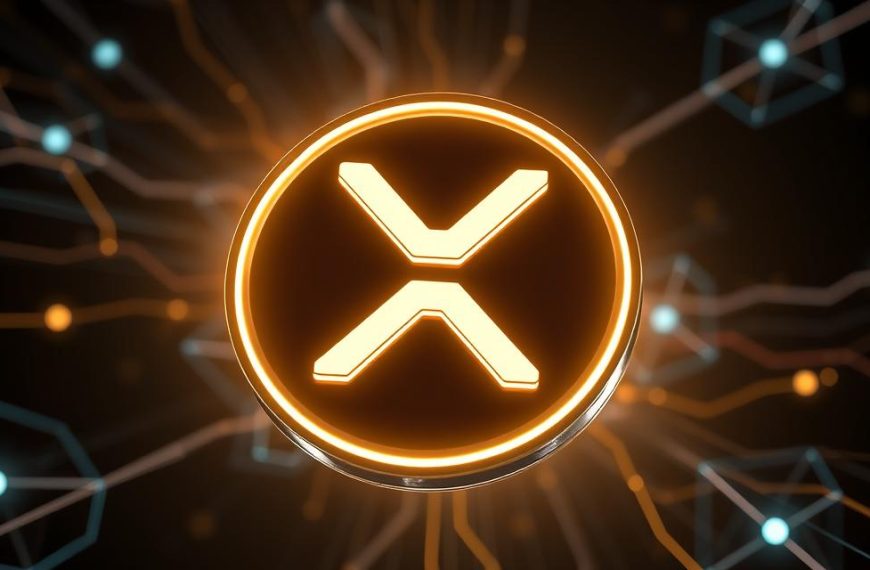Since Bitcoin launched in 2009, the crypto world has grown exponentially. Today, there are nearly 10,000 cryptocurrencies, each serving unique purposes. This diversity is powered by blockchain, the technology behind these digital assets.
Bitcoin remains the leader, often called “digital gold,” with a market cap of $1.93 trillion as of February 2025. However, other types like altcoins, stablecoins, and tokens have emerged. These coins offer more than just investment value.
From decentralized finance (DeFi) to non-fungible tokens (NFTs), crypto applications are reshaping industries. Payments, ownership records, and financial systems are now more efficient and secure. The cryptocurrency space continues to evolve, offering endless possibilities.
Introduction to Cryptocurrency
Blockchain technology has paved the way for a new era of digital currency. Cryptocurrencies, like Bitcoin and Ethereum, use cryptographic techniques to ensure secure and transparent transactions. Unlike traditional banking systems, these digital assets operate on decentralized networks, removing the need for intermediaries.
At their core, cryptocurrencies are built on blockchain, a distributed ledger that records all transactions. This technology ensures transparency and immutability, making it nearly impossible to alter records. Each cryptocurrency has unique attributes, such as token supply limits and validation methods. For example, Bitcoin uses Proof of Work (PoW), while Ethereum relies on Proof of Stake (PoS).
The market for digital assets is vast, with leaders like Bitcoin and Ethereum dominating. However, 90% of cryptocurrencies serve niche purposes. These alternatives, known as altcoins, offer diverse functionalities beyond just being a store of value.
Regulatory frameworks are evolving to keep pace with the rapid growth of cryptocurrencies. Governments worldwide are working to balance innovation with consumer protection. This regulatory evolution is shaping the future of digital currency, influencing its adoption and integration into mainstream financial systems.
- Cryptocurrencies are digital money powered by blockchain.
- Decentralized systems eliminate the need for traditional banks.
- Tokenomics and validation methods vary across cryptocurrencies.
- Altcoins provide alternatives to Bitcoin, catering to specific use cases.
- Regulatory changes are impacting the global adoption of digital assets.
Bitcoin: The Pioneer of Cryptocurrency
Bitcoin, introduced in 2009, revolutionized the financial landscape. Created by the pseudonymous Satoshi Nakamoto, it became the first decentralized digital currency. Built on blockchain technology, Bitcoin operates without intermediaries, offering secure and transparent transactions.
Bitcoin’s proof-of-work consensus mechanism ensures network security. Miners solve complex mathematical problems to validate transactions and add them to the blockchain. Every four years, Bitcoin undergoes a halving event, reducing the mining reward by 50%. This scarcity contributes to its store value narrative, often likened to “digital gold.”
Despite its success, Bitcoin faces challenges. Its 10-minute transaction time is slower compared to alternatives like Litecoin. While it excels as a store value, its functionality as a currency is limited due to scalability issues. However, its market cap of $1.93 trillion (as of February 2025) underscores its dominance.
Institutional adoption has further solidified Bitcoin’s position. Corporations and governments now hold Bitcoin in their reserves, recognizing its potential as a hedge against inflation. This growing acceptance highlights its role in the global financial system.
Environmental concerns remain a critical issue. Bitcoin’s proof-of-work mechanism consumes significant energy, raising questions about sustainability. Efforts are underway to explore greener alternatives without compromising security.
| Feature | Bitcoin | Litecoin |
|---|---|---|
| Transaction Time | 10 minutes | 2.5 minutes |
| Consensus Mechanism | Proof of Work | Proof of Work |
| Market Cap (Feb 2025) | $1.93 trillion | $15 billion |
Altcoins: The Alternatives to Bitcoin
Altcoins emerged as a response to Bitcoin’s limitations, offering faster and more versatile solutions. These cryptocurrencies provide unique features tailored to specific use cases, expanding the crypto ecosystem. While Bitcoin remains the leader, altcoins like Litecoin and XRP have gained significant traction.
Litecoin, launched in 2011, is often referred to as the “silver to Bitcoin’s gold.” It processes transactions in just 2.5 minutes, compared to Bitcoin’s 10-minute block time. Litecoin’s Scrypt algorithm enhances efficiency, making it a popular choice for everyday payments. Its MWEB privacy feature further boosts its appeal.
XRP, developed by Ripple, focuses on cross-border transactions. Its consensus protocol ensures fast and cost-effective network operations. With a market cap of $136.1 billion as of February 2025, XRP is a key player in enterprise solutions. However, its ongoing legal battles with the SEC have raised questions about its future.
Altcoins address Bitcoin’s perceived shortcomings, such as scalability and transaction speed. While Bitcoin’s market cap remains unmatched, altcoins like Litecoin and XRP offer compelling alternatives. Their adoption rates continue to grow, reflecting the diverse needs of the crypto community.
Stablecoins: Cryptocurrencies with Steady Value
Stablecoins have become a cornerstone of the cryptocurrency market, offering stability in a volatile space. Unlike Bitcoin or altcoins, these digital assets are designed to maintain a steady price, often pegged to fiat currency like the US dollar. This makes them ideal for everyday transactions and a safe haven during market fluctuations.
Most stablecoins achieve their value stability through fiat collateralization. This means they hold reserves in traditional currency to back their digital tokens. For example, Tether (USDT) and USD Coin (USDC) maintain a 1:1 peg to the US dollar, ensuring their price remains consistent. This mechanism provides users with confidence in their value.
Tether (USDT)
Tether is the largest stablecoin by market cap, valued at $141.4 billion as of February 2025. It is widely used in crypto trading pairs and remittances. However, Tether has faced scrutiny over the transparency of its reserves. Unlike USDC, Tether does not publish detailed monthly audits, raising questions about its long-term reliability.
USD Coin (USDC)
USD Coin, with a market cap of $55.9 billion, is known for its regulated status and transparency. It undergoes monthly audits, providing users with clear insights into its reserves. This makes USDC a trusted choice for decentralized finance (DeFi) ecosystems, where low-volatility transactions are essential.
Stablecoins play a vital role in the crypto space. They facilitate seamless trading, enable cross-border payments, and provide financial stability in inflation-prone economies. As regulatory frameworks evolve, stablecoins like USDT and USDC will continue to shape the future of digital currency.
Utility Tokens: Powering Blockchain Ecosystems
Utility tokens unlock access to unique services in blockchain networks. Unlike currency-focused cryptos, these tokens are designed to provide specific functionalities within a platform. They play a vital role in enhancing user experiences and driving adoption across decentralized ecosystems.
Utility tokens are not just digital assets; they are tools that enable users to interact with applications and services. From gaming to advertising, these tokens are transforming industries by offering seamless access and incentivizing participation.
Funfair (FUN)
Funfair (FUN) is a prime example of a utility token in action. Designed for decentralized gaming, FUN grants users access to casino games on its platform. By leveraging blockchain technology, Funfair ensures transparency and fairness in gaming outcomes. This token has become a cornerstone of the decentralized gaming ecosystem, attracting users with its innovative approach.
Basic Attention Token (BAT)
Basic Attention Token (BAT) revolutionizes the advertising industry. Integrated into the Brave browser, BAT rewards users for their attention to ads. This model creates a fairer advertising economy, where users and content creators benefit directly. BAT’s token burn mechanism also helps control inflation, ensuring long-term value for holders.
Governance rights vary across utility tokens, with some offering voting power to users. However, regulatory challenges persist. The SEC’s classification of certain tokens as securities has sparked debates, impacting their adoption and development. Despite these hurdles, utility tokens continue to shape the future of blockchain services.
Security Tokens: Digital Ownership on the Blockchain
Security tokens are reshaping ownership in the digital age. These tokens represent real-world assets, such as real estate or company equity, on the blockchain. Unlike utility tokens, which provide access to services, security tokens focus on ownership and investment opportunities.
Tokenization transforms traditional assets into digital forms. Stocks, real estate, and even art can now be divided into smaller, tradable units. This process increases liquidity, making it easier for investors to buy and sell fractional shares. For example, a $1 million property can be tokenized into 1,000 tokens, each representing $1,000 of ownership.
Security tokens must comply with SEC regulations. This ensures transparency and protects investors. Unlike utility tokens, which often operate in unregulated spaces, security tokens are registered and monitored. This compliance builds trust, attracting institutional investors and mainstream adoption.
Liquidity is a key advantage of security tokens. Traditional securities, like real estate, are often illiquid. Tokenization allows for 24/7 trading on global platforms. This flexibility benefits both investors and asset owners, creating a more dynamic market.
Use cases for security tokens are diverse. Fractional property ownership enables smaller investors to participate in real estate markets. Venture capital firms can tokenize equity, providing liquidity to early-stage investments. These applications highlight the transformative potential of security tokens.
Custody challenges remain a hurdle in cross-border transactions. Ensuring secure storage and transfer of tokens requires robust solutions. However, advancements in blockchain technology are addressing these issues, paving the way for seamless global trading.
| Feature | Security Tokens | Utility Tokens |
|---|---|---|
| Purpose | Ownership and investment | Access to services |
| Regulation | SEC-compliant | Often unregulated |
| Liquidity | High | Varies |
DeFi Tokens: Revolutionizing Decentralized Finance
Decentralized finance (DeFi) is transforming how financial services operate by eliminating intermediaries. Built on blockchain technology, DeFi enables peer-to-peer transactions, offering greater transparency and efficiency. This innovation is reshaping traditional banking, providing users with more control over their financial applications.
One of the key players in DeFi is DAI, an algorithmic stablecoin used in lending protocols. DAI operates through a collateralized debt position system, ensuring its stability. Users can lock up assets like Ethereum to generate DAI, which can then be used across various DeFi platforms.
DAI
DAI’s unique mechanism allows it to maintain a 1:1 peg with the US dollar, making it a reliable option for DeFi transactions. Unlike traditional stablecoins, DAI is not backed by fiat currency but by crypto assets. This approach enhances its decentralization, aligning with the core principles of DeFi.
UNI
UNI, the governance token for Uniswap, plays a crucial role in the largest decentralized exchange (DEX). With a market cap of $83.4 billion as of February 2025, UNI allows holders to participate in governance decisions. This democratic approach ensures that the community has a say in the platform’s future development.
“DeFi is not just a technological innovation; it’s a financial revolution.”
APY rates in DeFi often surpass those of traditional savings accounts, attracting investors seeking higher returns. However, these rewards come with risks. Smart contract vulnerabilities and impermanent loss are significant concerns, especially in liquidity pools. Users must carefully evaluate these risks before participating in DeFi services.
Regulatory uncertainty remains a challenge for DeFi. Lending and derivatives markets operate in a gray area, posing potential hurdles to growth. As governments worldwide work to establish frameworks, the future of DeFi will depend on balancing innovation with compliance.
| Feature | DeFi APY | Traditional Savings APY |
|---|---|---|
| Average Rate | 8-12% | 0.5-1% |
| Risk Level | High | Low |
For more insights into how DeFi is disrupting traditional banking, visit Investopedia’s guide to DeFi.
Non-Fungible Tokens (NFTs): Unique Digital Assets
Non-fungible tokens (NFTs) have redefined digital ownership in the crypto space. These unique assets use blockchain technology to verify ownership, making them one-of-a-kind. Unlike traditional cryptocurrencies, NFTs cannot be exchanged on a one-to-one basis, as each token holds distinct value and metadata.
The minting process involves creating a digital token and storing its metadata on the blockchain. This metadata includes details like ownership history, creation date, and unique identifiers. Popular collections like CryptoPunks and Bored Apes have showcased the potential of NFTs as both art and investment vehicles.
Fungible tokens, like Bitcoin, are interchangeable and identical in value. In contrast, NFTs are unique and indivisible. This distinction allows NFTs to represent ownership of specific assets, such as digital art, music, or virtual real estate.
The 2021 NFT market experienced a dramatic boom, with sales reaching billions of dollars. However, the subsequent bust cycle highlighted the speculative nature of these assets. Despite this volatility, NFTs continue to evolve, finding new applications in industries like ticketing and education.
Emerging use cases include event tickets and academic credentials. NFTs can verify attendance or certify qualifications, reducing fraud and enhancing transparency. These applications demonstrate the versatility of non-fungible tokens beyond digital art.
Environmental concerns have been raised due to Ethereum’s energy-intensive proof-of-work mechanism. However, the transition to proof-of-stake has significantly reduced the carbon footprint of NFT transactions. This shift addresses sustainability issues while maintaining the integrity of the blockchain.
Fractional NFT ownership is another innovative model. It allows multiple investors to own a share of a high-value NFT, making it accessible to a broader audience. This approach democratizes access to premium assets and enhances liquidity in the NFT market.
| Feature | Fungible Tokens | Non-Fungible Tokens |
|---|---|---|
| Interchangeability | Yes | No |
| Uniqueness | No | Yes |
| Use Case | Currency, Payments | Art, Ownership |
Ethereum: The Platform for Smart Contracts
Ethereum has become a cornerstone of blockchain innovation since its launch in 2013. Created by Vitalik Buterin, it introduced the concept of smart contracts, enabling programmable agreements on its platform. With a market cap of $329.5 billion as of February 2025, Ethereum remains a dominant force in the crypto space.
Ethereum’s evolution began with the vision of a “world computer.” This idea aimed to create a decentralized network for running applications without intermediaries. The introduction of ERC-20 and ERC-721 token standards fueled the ICO and NFT booms, expanding its ecosystem.
In 2022, Ethereum transitioned to Proof of Stake (PoS), significantly improving energy efficiency. This “Merge” reduced its carbon footprint by 99.95%, addressing environmental concerns. The shift also enhanced network security and scalability.
Scalability remains a focus for Ethereum. Layer 2 rollups and sharding are key solutions being implemented. These technologies aim to increase transaction throughput while reducing costs. For example, Layer 2 solutions like Optimism and Arbitrum process transactions off-chain, easing the main network’s load.
Ethereum’s transaction speed of 12 seconds is slower than competitors like Solana. However, its robust ecosystem and developer support keep it ahead. The Ethereum Foundation plays a central role in its development, raising concerns about decentralization. Despite this, Ethereum continues to drive innovation in services like DeFi and NFTs.
| Feature | Ethereum | Solana |
|---|---|---|
| Transaction Speed | 12 seconds | 0.4 seconds |
| Consensus Mechanism | Proof of Stake | Proof of History |
| Energy Efficiency | High | Very High |
Emerging Cryptocurrencies: The Future of Digital Assets
Emerging blockchain projects are pushing the boundaries of innovation. These new cryptocurrencies aim to address limitations in scalability, speed, and energy efficiency. Solana and Cardano are leading the charge, offering unique solutions to modern challenges.
Solana (SOL)
Solana has gained attention for its lightning-fast transaction speeds, reaching up to 65,000 transactions per second (TPS). This makes it a strong competitor to Ethereum, which struggles with scalability. With a market cap of $96 billion as of February 2025, Solana is a major player in the crypto space.
However, Solana’s network has faced criticism for occasional outages. These disruptions raise concerns about reliability, especially for enterprise-level projects. Despite these challenges, Solana’s innovative Proof of History (PoH) consensus mechanism continues to attract developers and investors.
Cardano (ADA)
Cardano takes a research-driven approach to blockchain development. Its Ouroboros Proof of Stake (PoS) protocol is peer-reviewed, ensuring robust security and scalability. With a market cap of $25.6 billion, Cardano focuses on creating sustainable and inclusive financial systems.
One drawback is the slow rollout of decentralized applications (dApps) on its network. While Cardano emphasizes thorough testing, this cautious approach has delayed adoption. Nevertheless, its commitment to academic rigor positions it as a long-term contender in the crypto world.
| Feature | Solana | Cardano |
|---|---|---|
| Transaction Speed | 65,000 TPS | 250 TPS |
| Consensus Mechanism | Proof of History | Ouroboros PoS |
| Market Cap (Feb 2025) | $96 billion | $25.6 billion |
Both Solana and Cardano are driving real-world adoption, particularly in developing economies. Their focus on scalability and sustainability aligns with global needs for efficient financial systems. As these cryptocurrencies evolve, they will play a pivotal role in shaping the future of digital assets.
Conclusion: Exploring the Diverse World of Cryptocurrency
The crypto world offers endless opportunities for innovation and growth. From Bitcoin’s dominance to the rise of altcoins, stablecoins, and tokens, the ecosystem is vast and varied. Understanding the purpose of each asset is crucial before making any investment decisions.
Diversifying your portfolio across cryptocurrencies can help mitigate risks. Start with stablecoins or blue-chip assets like Bitcoin and Ethereum before exploring altcoins. This approach balances stability with potential growth.
Innovations in blockchain interoperability are reshaping the market, enabling seamless transactions across networks. However, volatility and regulatory uncertainties remain challenges. Stay informed and cautious as the crypto space evolves.
By understanding the unique roles of each token and diversifying strategically, you can navigate the dynamic world of digital assets with confidence.



















